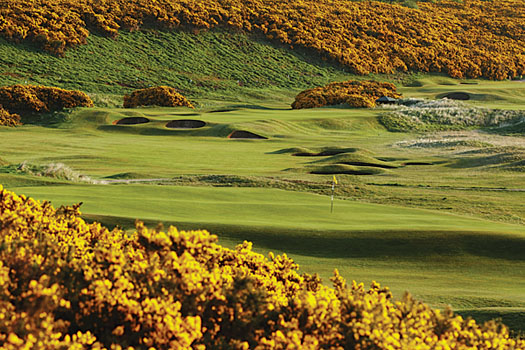
Scotland is, without doubt, blessed with some of the most beautiful scenery in the world. From the soft, lush rolling hills of the lowlands to the purple majesty of the highlands, geology and climate conspire to create the kind of stunning vistas that have inspired poets and artists down the centuries. Mother Nature has bestowed on the country two further blessings: golf and whisky.
To be fair, much of the credit should go to the water. Soft Scottish rain falls onto the high mountains before wending its way through the landscape, flowing down through the burns to keep the famous lochs brimming. Crystal clear, pure Scottish water is one of only three ingredients in authentic whisky and Scottish malts would not be the same without it. Indeed, the word ‘whisky’ itself is derived from the Gaelic ‘usquebagh’ meaning water of life, or lively water. Such is its contribution to the experience that for many purists their dram of choice can only ever be accompanied by a splash from the local burn.
Then, of course, there is the ocean. Scotland’s coastline has been carved, sculpted and framed by the sea in all its many moods: on occasion wild and raging, often playful, sometimes calm and contemplative. This is why Scotland boasts the finest links courses to be found anywhere.
With such natural advantages it’s no wonder that Scotland has been the cradle of these two great institutions. But it’s not just a common birthplace that connects golf and whisky, perhaps the connection is more abstract, metaphysical even. Certainly, there are parallels to be drawn between a fine round and a fine malt. For a start, golf, like whisky distillation is an art not a science. It takes years of patience, practice and dedication to execute the perfect drive and even then the result is never a foregone conclusion. In the words of Arnold Palmer: "Golf is deceptively simple and endlessly complicated; it satisfies the soul and frustrates the intellect. It is at the same time rewarding and maddening - and it is without a doubt the greatest game mankind has ever invented."
Likewise, the finest malts may be described as "deceptively simple and endlessly complicated." Even master distillers agree that there’s still a profound mystery to the process once the whisky has been placed in a cask – the point at which the precious liquid begins to take on its flavour and colour. Some distillers favour brand new white oak casks, which give a vanilla note, others older sherry casks, which offer more body, depth and sweetness. By law whisky must be stored for at least three years, but it goes without saying that the very finest malts are aged for a great deal longer. Balvenie Thirty, for example, is aged in Oloroso sherry butts for three decades to give it that distinctive honeyed sweetness with a nutty finish. The astonishing Glenfarclas Forty-Year Old is aged for almost half a century to produce its chocolate richness along with notes of coffee and maraschino cherries. It is time, patience and dedication, which make for perfection in a malt just as they do in a player.
Pages
Click here to see the published article.











